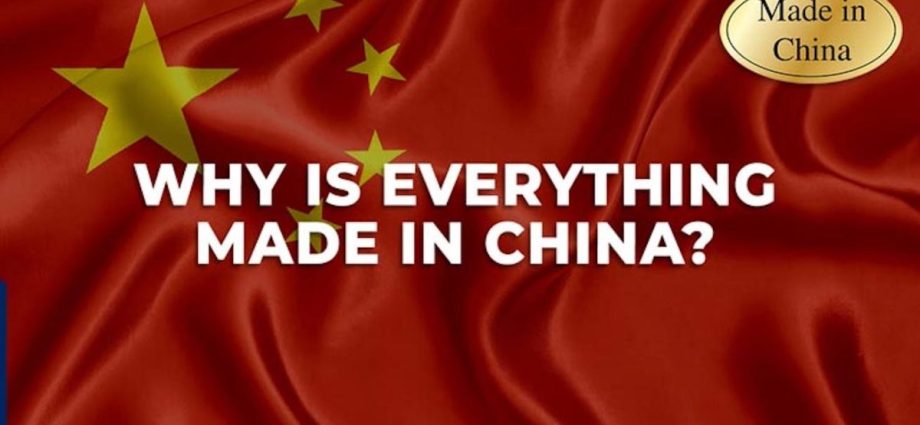With the current geopolitical challenges between China and the United States, as well as the ongoing supply chain issues affecting manufacturers and consumers, there’s been much talk about moving global manufacturing out of China.
But despite the talk, US-China trade reached a record level in 2022, with no signs of any slowing in the near future.
While former US secretary of state Henry Kissinger is credited with opening China to the West under then-President Richard Nixon, it wasn’t until 2000 that the US granted China permanent normal trade relations — a legal designation that allows foreign nations be granted most favored nation status, and hence be treated similarly to other members of the World Trade Organization.
This move reinforced China’s growing role in global trade. Since then, much of the world’s manufacturing base has migrated to China, attracted by low-cost labor and favorable policies from the Chinese government. These policies include massive investments in infrastructure and trade capacity.
Tariffs and trade wars
The spectacular economic rise of China has created many geo-political challenges, from spy balloons to unfair trade practices and accusations of intellectual property theft. This has resulted in an active trade war between the US and China.
In 2018, then-President Donald Trump invoked Section 301 of the Trade Act of 1974 to apply tariffs on billions of dollars on Chinese goods. As a result, pressure intensified on global companies to relocate their manufacturing to lower-cost destinations across Asia, such as Vietnam, Bangladesh and India.
After the Covid-19 pandemic caused chaos in global supply chains, there were calls to bring manufacturing back closer to home either by “nearshoring” — building factories in Mexico for the US market, for example — or reshoring back to home countries.

Despite these significant financial and political pressures, many companies are still not moving more of their production out of China. Why not? As it turns out, China has mastered the craft of manufacturing.
As part of our ongoing research into global competitiveness, we had the opportunity to review confidential data from some manufacturing firms. This data indicated that even though labor costs associated with production are significantly lower in other markets, such as Bangladesh, so is productivity.
Chinese laborers are both more expensive and more productive than labor in other emerging economies in Asia. Both of these factors must be taken into account when making the decision to relocate production out of China. But this is only part of the story.
The reality of manufacturing
We interviewed Joseph Eiger, our former student and an executive in a global sourcing company that manufactures consumer products, about how the world of manufacturing operates.
Consider the case of making a baseball cap, for example. Some baseball caps are very basic, while others are more complicated and involve embroidery and more expensive fabrics. As Eiger put it: “While producing baseball caps is not the same as producing a cell phone, it’s still pretty complex.”
China’s manufacturing industry has access to a high level of agglomeration economies — or ecosystem. Take the example of producing a hoodie. It’s not just about the textiles needed to cut and sew into a hoodie. It is also about the trims, dyes, zippers, cords and other necessary pieces that are required for assembling the product, Eiger explained.
China has deployed a strategy that ensures the entire manufacturing supply chain is located there, and has mastered each step of the process. China even imports and processes much of the world’s wool and cotton, including a significant amount of US-grown cotton that comprises approximately 35 per cent of the world total.
This cotton is then processed, made into fabric, dyed and sewn into clothing and other products. They are then exported globally, including back to the US as finished goods. The entire textile ecosystem for production is located in China. And this is not just the case for fabric, it’s also the case for all of the components.

If a retailer in the US or Canada wanted to move the production of the textiles it sells out of China, it would have to move the entire ecosystem with it. Either that, or the retailer would need to source the inputs needed from China into other countries like Bangladesh, where final production would take place.
Costs are too high
It turns out that the costs associated with leaving China are simply too high. As long as the ecosystem for manufactured goods remains in China, then so will its significant share of the world’s manufacturing.
Will there be a tipping point when companies will relocate production out of China? It is unlikely that conditions will suddenly switch anytime soon in favor of other countries.
In the coming years, as manufacturing sectors in other Asian countries emerge and develop their own ecosystems, the economic case to move production out of China will grow as well. But this is some years away.
Walid Hejazi is a professor of international business at the Rotman School of Management, University of Toronto. Bernardo Blum is an associate professor at the Rotman School of Management, University of Toronto.
This article is republished from The Conversation under a Creative Commons license. Read the original article.

